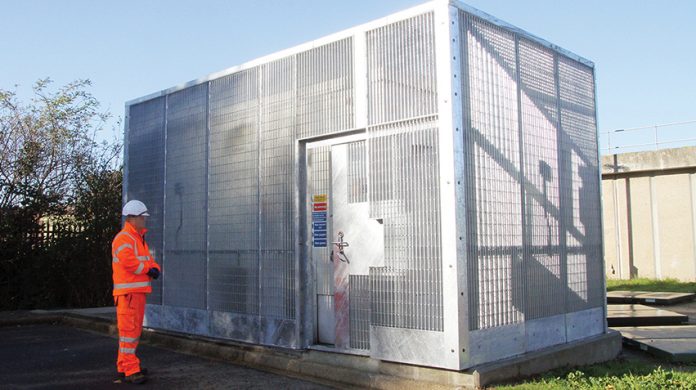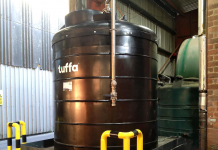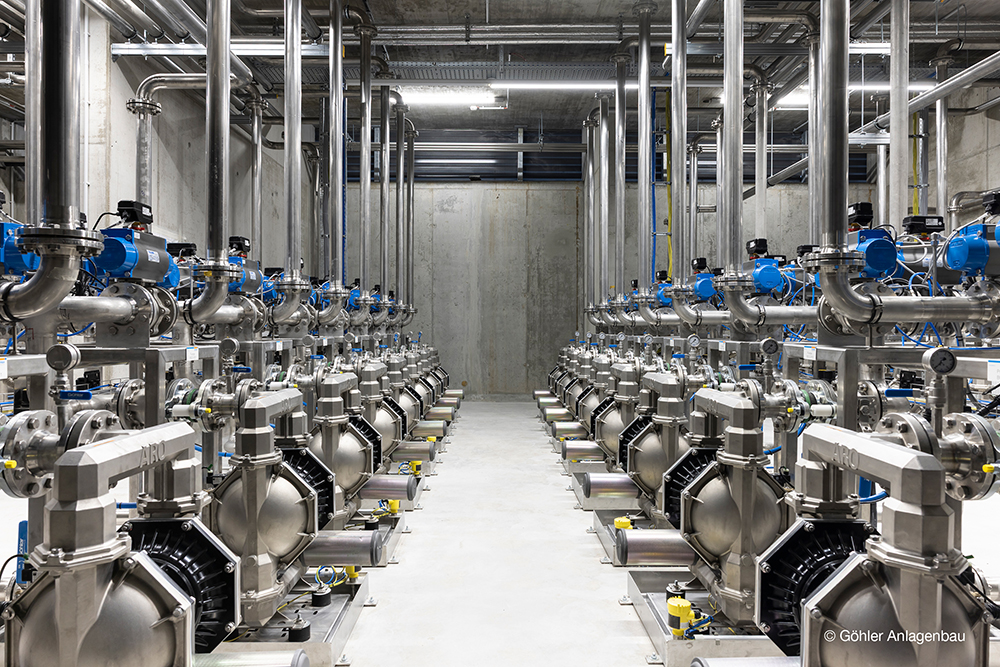Manufacturing and process industries routinely handle and store chemical, biological and radioactive (CBR) materials and other toxic substances, with rigorous measures ensuring the safety of operatives and personnel working with them. But these substances could pose catastrophic risks to employees, the public and even national security should they get into the wrong hands.
The rise in global terrorism has seen a tightening in legislation and guidelines for the secure storage of hazardous substances including toxins, radioactive materials as well as precursor chemicals such as hydrogen peroxide or ammonium nitrate.
Compliant security of chemicals is becoming an increasing challenge for sites carrying out R&D, chemical formulation and production processes as they also adapt to the ongoing need to reorganise and expand operational space.
Multi-layered
Depending on the assessed risks specific to a site, secure storage will rely on a multi-layered system of security technology and management protocols. This may include perimeter security, CCTV, biometrics, alarms, and an adopted system of access control (solenoid, fob or key activated door entry/locking), allowing different levels of site movement for authorised personnel.
These layers provide a series of physical barriers and surveillance for intercepting and impeding the progress of an intruder towards assets or materials of critical value on site. Often acting as the last line of defence against infiltration will be an engineered physical structure such as a high security door, proprietary security kiosk or similar stronghold.
But how can we be sure these final defences will meet site-specific risks for the secure containment of chemicals and other hazardous materials, while sustaining safe and efficient day-to day operations? Would the physical security you have in place pass inspection by a compliance assessor? If not, you may need to review operations, causing potential disruption with impacts to project deadlines, deliveries and customer service. It is therefore important to make sure storage arrangements for chemicals provide an appropriate standard of security performance based on the perceived risk of crime.
Simulated attack tests
The most reliable route to compliance is by using high security equipment whose performance has been certified and graded according to its tested resistance under simulated attack.
This has seen the growing adoption of the LPCB (Loss Prevention Certification Board) approval system for critical assets and infrastructure, accepted by the UK government as an appropriate certification regime alongside CPNI badged systems.
LPCB certifies security products to the rigorous criteria of LPS 1175, a performance test standard for intruder resistant systems originally developed, and still recommended, by the UK insurance industry. Products are awarded a security rating – from SR1 to SR5 (anti-terror) – according to a hierarchy of risk scenarios involving different attack tools and duration, updated in response to Home Office guidance. Manufacturers are now working to an updated LPS 1175 test (issue 8) reflecting the latest changes in the landscape of physical security risk.
Significantly, LPCB approval is not based on a one-off type test; it involves regular audits to ensure on-going production units comply with the prevailing test standard and any revisions. This provides ultimate confidence of system performance and is one reason why LPCB certified products are widely adopted by the utilities and other areas of critical national infrastructure (CNI), and also meet the criteria of Secured By Design accreditation.
Secure containment
As a specialist in the turnkey delivery of LPCB certified security solutions for CNI and other high risk, high value assets, Technocover has developed a proven approach to secure containment for scientific, manufacturing and high-tech environments.
Many applications can be met by standard products from the company’s LPCB approved, fabricated steel UltraSecure range, for example, through the installation of a high security enclosure, cage, window louvres and bar sets with the appropriate security rating.
However, effective containment, especially when retrofitted, often needs a carefully tailored solution to dovetail with challenging spaces and very different storage scenarios, as well as integrating with an established suite of access control and security management.
In industry, a trend is emerging for large-scale enclosures and cages to secure groups of critical assets, and for bespoke products to bring refurbished premises, extensions or re-appropriated space in line with security needs.
This evolving sophistication cannot always be effectively met by cherry picking off-the-shelf security products. It requires the early involvement of experienced manufacturers whose security engineering can push both the spatial and operational envelope while remaining within the scope of third party approval.
Early involvement
Early involvement with the client and its facilities management team is crucial in delivering bespoke installations to make sure they are ‘right first time’ and perform as expected.
Technocover achieves this through ‘Total Service’. This approach screens every aspect of the proposed solution – its design, location, installation and operation – to identify and resolve potential snags while maximising opportunities for efficiency gains and cost savings.
Aiming for the lowest cost solution, it addresses every possible aspect of product life cycle to ensure the best return on investment, from maximising the buildability and operational advantages of the design, to ensuring a high quality system finish for long, low maintenance service.
The greater the complexity and benefits sought, the tougher it is to achieve them within the scope of LPCB third party approval. More and more clients are relying on the engineering know-how of LPCB specialists like Technocover, which has over 26 years’ experience in designing solutions that fully exploit, but do not unnecessarily exceed, the envelope of their security certification.
There is also a need for coordinated planning and integration with adopted security technologies – compatible certified locking, access control, alarms, CCTV, and so on.
Integrated physical security
Leading the way in smart, integrated suites of physical security, Technocover provides a comprehensive range of solutions to meet varied needs and levels of assessed risk. Products include high security doors (including fire rated models), access covers, solid wall and mesh enclosures (cabinets, kiosks and cages), partitions and panels, louvres and window bar sets, plus a wide range of access control, locking and other accessories.
The company builds many contingencies into the UltraSecure product designs that it submits to the demanding LPS 1175 performance tests of LPCB approval. Options such as louvre venting, vision panels and special anchoring systems provide flexibility to adapt solutions to varying and unpredictable spatial and operational needs, while fulfilling the required LPCB security rating.
Design modularity
Design modularity allows secure kiosks and mesh enclosures to be scaled up to large sizes and configured to unusual footprints, roof layouts or lean-to applications. It also facilitates offsite construction of kiosks pre-fitted with M&E services, which can be craned in to reduce asset downtime and site congestion.
Technically rigorous but highly flexible, the approach can help production sites to better manage operational change and maintain compliance with security standards and assured procedures.
Clients can consider and manage the full continuum of service life needs, ‘designing out’ health and safety risks, maximising operational efficiency, and insuring against unexpected modifications that can be disruptive and costly.
Secure storage in the laboratory
Laboratories are among the types of setting that may require bespoke, certificated LPCB solutions for the protection of hazardous chemicals as well as controlled materials, including drugs and medicines.
A recent project involved the design of a special protective cage and access system to secure a refrigerator and incubator within a university unit. Meeting the need for external visibility of the protected assets, Technocover designed and installed a five-sided cage system, tested and approved to LPCB SR4 (LPS 1175 Issue 7; certificate number 450i).
The company has just achieved an updated LPCB 450i certificate for a ‘Hybrid Case System’ with the options of solid panel construction, a removable roof, or roof access hatch for even greater flexibility to meet operational needs.
Adaptable engineering
Today’s certified security equipment can do much more than provide a last line of defence for hazardous chemicals on the manufacturing site. Look for a security provider that can offer adaptable engineering that will dovetail with your changing production space, house security and add value to operational efficiency and personnel safety.
info: www.technocover.co.uk, tel: 01938 555511









